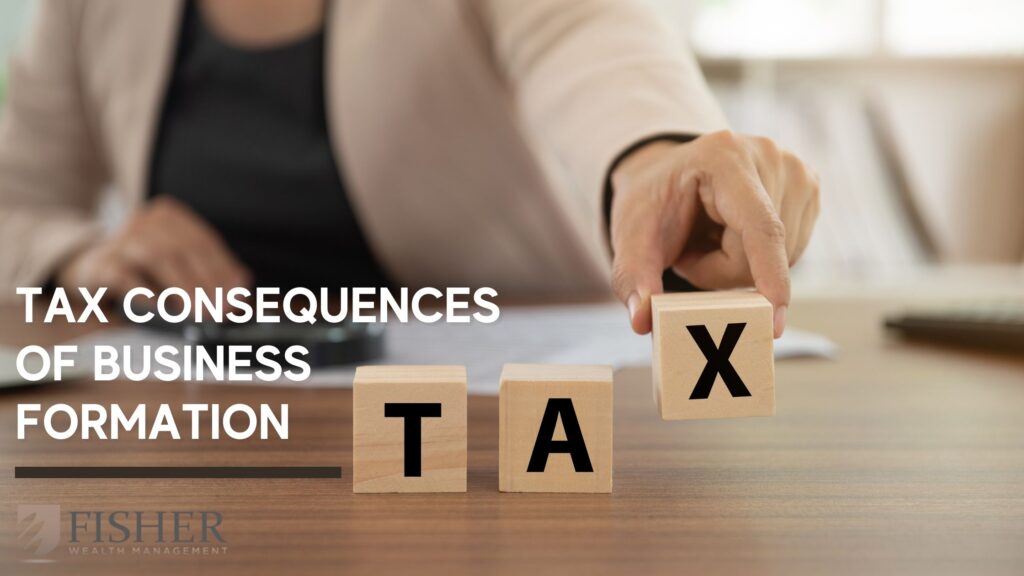
Tax Consequences of Business Formation
What are the tax consequences of business formation, in general?
When starting a business, you must consider a number of factors. One very important factor is taxation. Although business tax planning is a complicated area, the first step is to understand the tax consequences when the business is formed. Typically, the business owners will transfer cash or property to the business in return for an interest in the business. This exchange will have an impact on the tax basis for the owner and the business. Although myriad business entities exist, the following types will be covered here: C corporations, S corporations, partnerships, sole proprietorships, limited liability companies (LLCs), limited liability partnerships (LLPs), limited partnerships (LPs), and professional corporations (PCs).
Impact on specific business entities
Tax treatment will vary, depending on the type of business entity you select.
C corporations
When creating a C corporation, the incorporators (owners) typically contribute cash or property in a corporation in exchange for shares of stock. Under normal circumstances, transferring appreciated property to a corporation in exchange for stock would involve tax consequences in the form of either a gain or loss. However, Section 351 of the Internal Revenue Code provides an exception to this general rule, providing for nonrecognition of this gain or loss upon contribution to the corporation if the contributors control 80 percent of the corporation after the exchange. You should be aware of this exception.
In addition, it is important for you to understand the concept of tax basis. You need to know how exchanging property for stock will affect your tax basis in the stock and also what basis the corporation assumes in the property it receives.
S corporations
An S corporation is also subject to Internal Revenue Code Section 351, and a contribution of property to an S corporation may also receive the same nonrecognition treatment as a contribution of property to a C corporation.
Concept of boot and relief of owner’s liabilities
“Boot” may be defined as any property a corporation gives you in addition to its own stock. You need to understand the tax ramifications of boot and of transferring property encumbered by a liability to the corporation.
It is also important to understand how boot and the relief of liabilities affect your basis and the corporation’s basis. These rules apply to C corporations and S corporations alike.
Partnerships
Partners can generally make tax-free contributions of appreciated property to a partnership. That general rule is subject to a couple of exceptions, however. There may be later consequences for a partner who contributes appreciated property, including possible recognition of gain.
Also, tax basis calculation can be a bit complicated, particularly if you contribute appreciated property or property encumbered by liabilities.
Sole proprietorships
A sole proprietor and his or her business are indistinguishable for tax purposes. Thus, a proprietor may generally transfer personal assets to the business without tax consequences.
Limited liability company (LLC)
As a general rule, no gain or loss is recognized by either the LLC or its member when property including cash is contributed in exchange for an interest in the LLC. Receiving an LLC membership interest as a payment for services, however, can lead to certain tax consequences.
Tax basis is usually calculated in accordance with partnership rules.
Limited liability partnership (LLP)
LLPs follow most of the same tax rules as LLCs. Therefore, no gain or loss is recognized when property or cash is contributed in exchange for an interest in the LLP.
Limited partnerships (LPs)
LPs generally follow the same tax rules as general partnerships.
Professional corporations (PCs)
Like a C corporation, a PC (and its shareholders) generally does not recognize gain or loss when stock is issued in return for cash or property incidental to initial capitalization of the business if the requirements of Section 351 are met. In other words, Section 351 of the Internal Revenue Code applies both to C corporations and to PCs.
As for tax basis, PCs also follow the same rules as C corporations.
This article was prepared by Broadridge.
LPL Tracking #1-587213